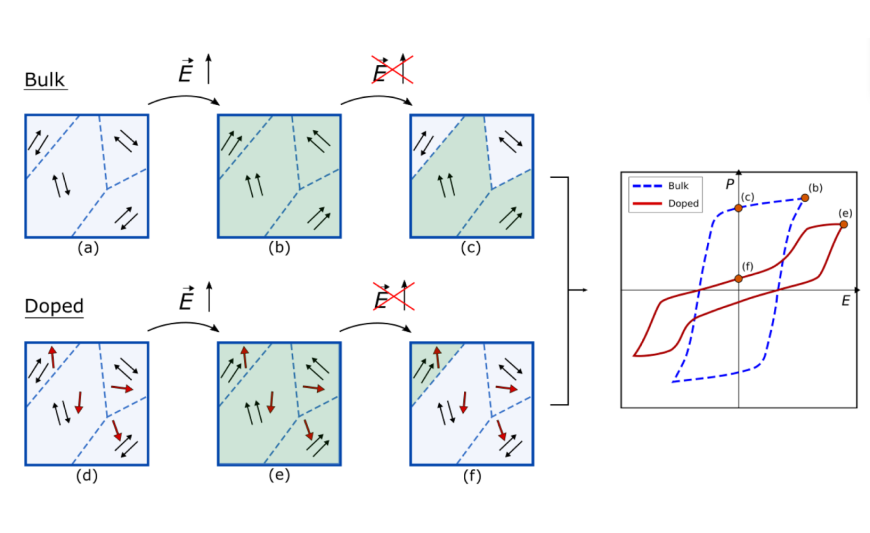Role of doping and defect quenching in antiferroelectric NaNbO3 from first principles
Revealing the impact of defects on anti-ferroelectric loops
2022/10/07 by K. Albe
We present a method which allows to solve the charge neutrality condition while accounting for defect quenching and fixed dopant concentrations, without neglecting the dependency of their charge state on electron chemical potential and temperature.

The antiferroelectric NaNbO3 is a candidate material for application in high-energy density dielectric capacitors. Various doping strategies have been used for installing the desired narrow double P-E loop behavior in this lead-free material. However, to unravel the influence of doping on the double P-E loops, we first need to understand the influence of doping on the defect equilibrium. In this study, we therefore calculate the formation energies, charge transition levels, and doping behavior of single defects and defect complexes in orthorhombic NaNbO 3 doped with Ca, Sn, and Sr by means of density functional theory (DFT). The results show that substitutions with dopants have formation energies as low as Na and O vacancies. Additionally, all defect complexes show negative binding energy, which means they are stable and very likely to form. Lastly, we show how defect quenching influences the Fermi level, which reveals how the synthesis conditions can tailor the final defect distribution.



